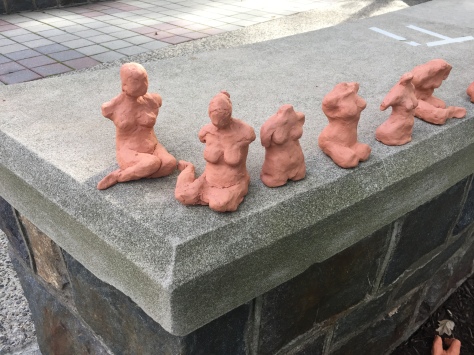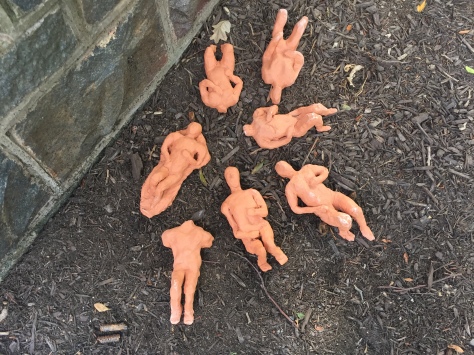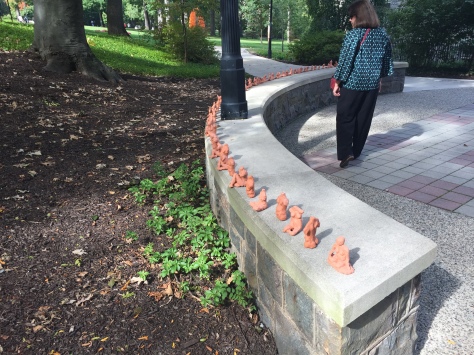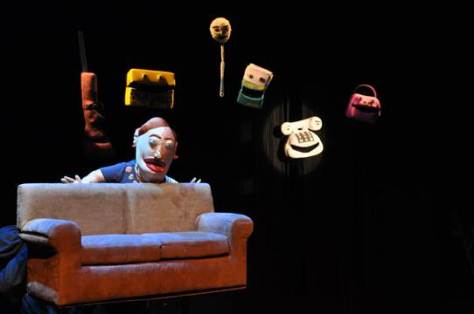Patrick and I were in the archive this morning looking at the papers of the Reverend John Crocker. Rodney printed out Bryan Marquand’s 2012 obituary of Reverend Crocker that was published in the January 6th edition of The Boston Globe. The obituary includes a comment Crocker made to a Globe reporter in 1976. “We are responsible for what happens in this world,” he says. “It is possible for people to change, and there is time to change.”
This investment in the possibility of change not only animates the idea of democratic culture but is implied in what I am calling democratic literacy. What is it? How do we cultivate it?
 Reading Doris Sommer we are reminded of a Brazilian educator, Paulo Freire, who took these questions seriously. His wonderful little book Teachers as Cultural Workers: Letters to Those Who Dare Teach makes a case that teachers, and the institutions in which they work, are responsible for cultivating democracy. One of the most inspiring dimensions of Freire’s pedagogy was his suspicion of “the pedagogical populism that prefers easier engagements, because full citizenship requires high-order literacy” (112).
Reading Doris Sommer we are reminded of a Brazilian educator, Paulo Freire, who took these questions seriously. His wonderful little book Teachers as Cultural Workers: Letters to Those Who Dare Teach makes a case that teachers, and the institutions in which they work, are responsible for cultivating democracy. One of the most inspiring dimensions of Freire’s pedagogy was his suspicion of “the pedagogical populism that prefers easier engagements, because full citizenship requires high-order literacy” (112).
But how do we cultivate creativity and criticism in the open space of democracy?
One working answer is to explore the relationship between art and democracy, between creativity and criticism. I’m going to read ahead to the chapter in Sommer we will consider on Thursday where she addresses the relationship:
. . . .democratic life depends upon the dynamic between art-making and humanistic interpretation. This is no exaggeration. A disposition toward creativity and critique resists authoritarian single-mindedness; it acknowledges different points of view and multiple ways to arrange available material. Constitutional democracies are themselves collective works of art accountable for their constructions. And constitutions remain open to performative interventions, obliging citizens to cultivate their creativity and criticism (104).
The idea that a constitutional democracy is itself is a collective work of art, accountable to its making, calls attention to participatory and performative cultural activities—the “venture into the multifarious practices that make up culture, the range of cultures.
Whether in archives or outside of them, or whether in museums or in the streets, our cultural activities are constitutive of our democratic life. These activities made possible by an open cultural space and a spirit of creative interventions, critical conversations, and communicative actions. A vibrant democratic culture requires a continual effort to cultivate democratic literacy—the civic arts of creativity and criticism.
However, any conversation about democratic literacy raises fundamental questions about what we mean by learning, by education. Richard Rorty’s essay Education as Socialization and as Individuation, from his book Philosophy and Social Hope (1999), talks about the institutions that do this work, secondary schools and colleges. He talks about the cultural debates over cultural literacy and the confusion about a word “education” that refers to “two entirely distinct, and equally necessary, processes— socialization and individualization. Rorty then puts his cards on the table:
I think that the conservatives are wrong in thinking that we have either a truth-tracking faculty called ‘reason’ or a true self that education brings to consciousness. I think that the radicals are right in saying that if you take care of political, economic, cultural and academic freedom, then truth will take care of itself. But I think the radicals are wrong in believing that there is a true self that will emerge once the repressive influence of society is removed. There is no such thing as human nature, in the deep sense in which Plato and Strauss used this term. Nor is there such a thing as alienation from one’s essential humanity due to societal repression, in the deep sense made familiar by Rousseau and the Marxists. There is only the shaping of an animal into a human being by a process of socialization, followed (with luck) by the self-individualization and self-creation of that human being through his or her own later revolt against that very process.
He then draws out an interpretation of John Dewey’s contribution to our understanding of what education is, what it is for:
Dewey’s great contribution to the theory of education was to help us get rid of the idea that education is a matter of either inducing or educing truth. Primary and secondary education will always be a matter of familiarizing the young with what their elders take to be true, whether it is true or not. It is not, and never will be, the function of lower-level education to challenge the prevailing consensus about what is true. Socialization has to come before individuation, and education for freedom cannot begin before some constraints have been imposed.
We Deweyans think that the social function of American colleges is to help the students see that the national narrative around which their socialization has centred is an open-ended one. It is to tempt the students to take themselves into people who can stand to their own pasts as Emerson and Anthony, Debs and Baldwin, stood to their pasts. This is done by helping the students realize that, despite the progress that the present has made over the past, the good has once again become the enemy of the better. With a bit of help, the students will start noticing everything that is paltry and mean and unfree in their surroundings.
The challenge for us is to describe how creative cultural practices—let’s say art on a wall of the American University in Cairo, music festivals, urban architecture and design, identity formation in sport, social justice movements, writers collectives, body art, and so on—enact, intervene, construct, reveal, reframe the experience and the possibilities of democratic life.



 One
One
 Three
Three

 A talk delivered by Michael Chaney, Chair, African American Studies, Dartmouth College
A talk delivered by Michael Chaney, Chair, African American Studies, Dartmouth College









